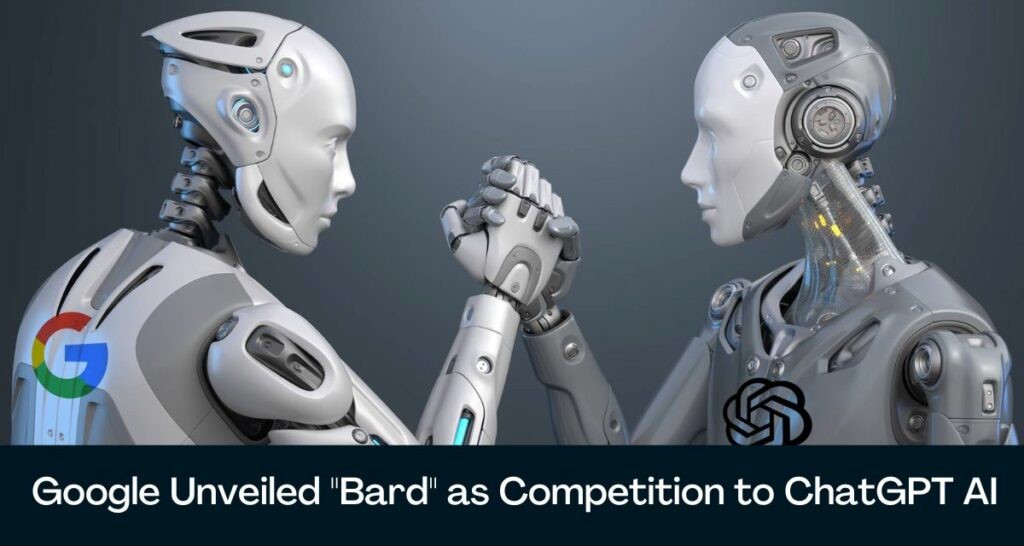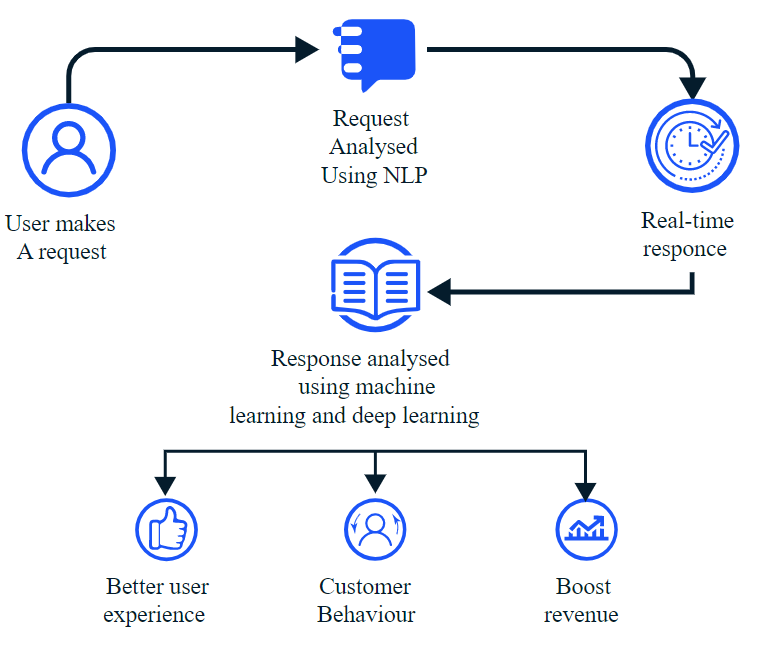Description

Disclaimer: Copyright infringement not intended.
Context:
- Google has made a decisive move in the generative artificial intelligence (AI) race, announcing that it is working on a competitor to ChatGPT called ‘Bard’.
BACKGROUND: Read about ChatGPT https://www.iasgyan.in/daily-current-affairs/chatgpt
What is a chatbot?
- A chatbot is a rules-based computer program, which simulates human interaction with end-users via a chat interface. In other words, a chatbot can have a conversation with you just like a real person, ask questions and answer queries based on pre-defined rules and logic.
- Machine Learning Algorithms power the conversation between a human being and a chatbot.

How will Google’s Bard work?
- The service will use artificial intelligence to generate answers in text when people type in queries, similar to what ChatGPT does.
- Bard can help people perform tasks like planning a baby shower, compare two Oscar-nominated movies, or explain discoveries by NASA to a 9-year-old child.
- Bard is based on Google’s AI model called LaMDA, which the company introduced in 2021 as its generative language model for dialogue applications which can ensure that the Google Assistant would be able to converse on any topic.
.jpeg)
Bard Vs Chat GPT:
- Google’s BARD has the ability to draw information from the Internet. “It does so by drawing on information from the web to provide fresh, high-quality responses.
- ChatGPT has the ability to respond to complex queries — though with varying degrees of accuracy — but its biggest shortcoming perhaps is that it cannot access real-time information from the Internet. ChatGPT’s language model was trained on a vast dataset to generate text based on the input, and the dataset, at the moment, only includes information until 2021.
Concerns:
- The text generation software from Google and OpenAI, can be extremely prone to inaccuracies. The ability to search the Internet in real-time, including content such as hate speech and racial and gender biases and stereotyping, could lead to problems.
- There has been speculation that professions dependent upon content production could be rendered obsolete, including everything from playwrights and professors to programmers and journalists. The ability to generate human-like written text has prompted suggestions that the technology could replace many professions.
Significant advantages of using AI chatbots:
Improved End-User Experience:
- Chatbots provide end-user support on a real-time basis in any setting, be it in a retail sales store, product support center/website or a business front or back office. Because these interfaces are readily available to end-users, there is no specific wait time. This means, customers or end-users can readily have the answers to their queries, which significantly enhances the user experience. Based on the query, chatbots can present users with rich content with documentation, videos and so on to help resolve queries.
- Furthermore, chatbots can provide 24/7 assistance and support to customers and end-users. They can be programmed to provide automated answers to common queries immediately and forward the request to a real person when a more comprehensive action is required. This has a significant positive impact on customer and user experience.
Increased Face-time with Customers:
- Businesses can use chatbots to increase their face time with customers. Research suggests that modern customers expect a personalized experience with their favourite brands through increased interaction times and more personalized communication channels. Chatbots enable just that and more by providing easier and faster access both ways.
- Moreover, chatbots can be readily integrated into popular platforms such as Facebook or Instagram, thus enabling a seamless experience for customers and end-users.
Analytics and Insights:
- Chatbots serve as a great communication channel and a medium to gather insights into customer preferences and behavior. Businesses can collect instant feedback from customers and end-users through chatbots and then analyze the data to gather insights around their habits and preferences.
- Besides, chatbots can also be leveraged to identify purchasing patterns and consumer behavior. It can help businesses make critical decisions around product marketing and launch strategies.
Lead Generation and Conversion:
- With all the customer and end-user information that a chatbot aggregates, it is possible to help customers in their purchasing journey through focused messaging using a chatbot. Chatbots can be programmed to persuade and influence user decisions and increase conversion rates.
Cost Savings and Scalability:
- Developing and implementing a fully functional chatbot is faster and cheaper than developing a cross-platform app or hiring employees to handle many incoming queries. Thus, businesses can make significant savings in terms of hiring, training and payroll costs. A typical chatbot would only involve the initial development cost and a nominal runtime cost, which is potentially lesser than the costs spent on actual human resources.
- Furthermore, multi-lingual chatbots can be used to scale up businesses in new geographies and linguistic areas relatively faster. Businesses can program the chatbot to easily handle incoming queries without having to augment their staff readily.

Final Thought:
- Chatbots provide unique benefits for businesses and other stakeholders. But at its current stage, chatbots lack the nuance, critical-thinking skills or ethical decision-making ability.
- The biggest challenge with AI chatbots at present will still be the need to train them with Machine Learning to efficiently handle queries and situations of varying levels of complexity.


https://indianexpress.com/article/explained/explained-sci-tech/bard-vs-chatgpt-and-the-concerns-with-both-ai-chatbots-8429866/
















